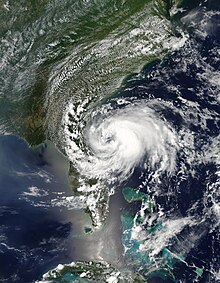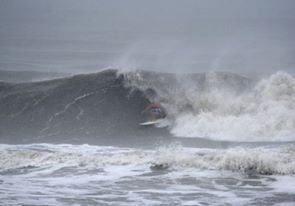northjaxpro wrote:Steve wrote:I hate it when I botch a post and accidentally delete everything. Haha. This would have been more detailed, but whatever. Lowest pressure at surface reporting stations (NWS) I could find was 29.84 in Galliano, LA near where the NHC has Landfall. It's NW of Grand Isle and NE of Cocodrie. I hit several reporting stations to its east and to its west (Destin, Pensacola, Mobile, Pascagoula, Slidell, Kenner, Galliano, New Iberia, Lake Charles). Pressures were highest on the eastern and western edges and gradually lowered as you moved inward toward Galliano. It also had a pretty decent .13mb fall from yesterday's noon reading 29.84 from 29.97. Noted that the pressure in Lake Charles is lower than Pascagoula (29.92) or Gulfport (29.90) or Slidell (29.89). Split the middle, and pressures currently indicate landfall where it's supposed to happen.
Besides all the observations I lost, the other point in the post was that none of the recent models dropped pressure more than 3-4mb from the central Gulf to Landfall. I think the lowest I remember seeing the last couple of days might have been 985 or 984. I don't think it'll get that low, but 988/989 would be about right.
I will have to disagree with northjaxpro a little on this though. No way this has peaked. We'll have some pulses tonight at DMAX and then maybe around ladfall tomorrow. But the models prog it to drop pressure up to the great lakes before embedding in that upper trough. Joe B also mentioned that he thought conditions would be ripest in Arkansas structure wise. So we'll have to wait and see.
Steve, I may be wrong. It certainly would not be the first time and I respect your disagreement. Yeah, it coùld try to intensify prior to.landfall, but I favor the odds of it not at this point. Dry air has really choked this system, which I thought could happen last night and it has indeed.
Will monitor, as everyone on the Gulf Coast should in the event it does try to strengthen prior to landfall.
Strengthening may not be the right word, the storm may stay around 50 mph, perhaps get up to 60. However, the trend in the models has been for the core to become better organized and the stronger winds to occur closer to the core. In this case the dry air would actually be helping the storm break away from the large feeder band where the strongest winds currently are. This isn't a guarantee but it's certainly a possibility. If the storm does this early on then it could intensify before landfall.













